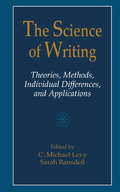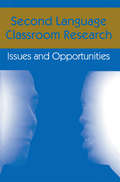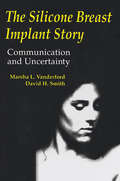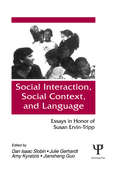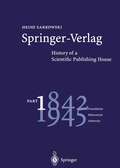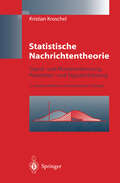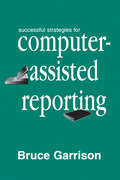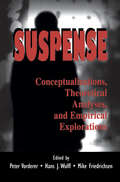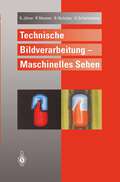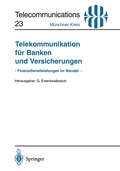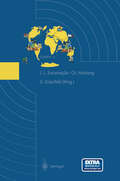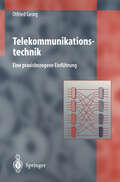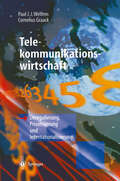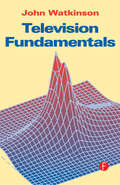- Table View
- List View
The Science of Writing: Theories, Methods, Individual Differences and Applications
by C. Michael Levy Sarah RansdellConceived as the successor to Gregg and Steinberg's Cognitive Processes in Writing, this book takes a multidisciplinary approach to writing research. The authors describe their current thinking and data in such a way that readers in psychology, English, education, and linguistics will find it readable and stimulating. It should serve as a resource book of theory, tools and techniques, and applications that should stimulate and guide the field for the next decade. The chapters showcase approaches taken by active researchers in eight countries. Some of these researchers have published widely in their native language but little of their work has appeared in English-language publications.
Second Language Classroom Research: Issues and Opportunities (Second Language Acquisition Research Series)
by Jacquelyn Schachter Susan M. GassIn an attempt to fill the gap left by the many published studies on classroom second language research, this book explores a variety of human, social, and political issues involved in the carrying out of such studies. Many journals are chock-full of the results of classroom research, with evidence to support one claim or another about the efficacy of one teaching method or another. Many textbooks are replete with statistical procedures to be used, and with experimental designs to fit varying situations. Too often overlooked in these treatments are the human, social, and political issues involved in carrying out research in classrooms that are not one's own. What are the problems going to be when one attempts work such as this? What does one do on discovering that an administrator's agenda is different than one had thought? What does one do when a teacher resents intrusions into her classroom? This book offers a view on those kinds of issues, as presented and managed by successful classroom researchers themselves. The authors present their own experiences including, on occasion, their trials and tribulations and how they dealt with them. They lay themselves open to criticism in doing so, but they make their contributions much the richer as well. The classroom contexts extend to different countries, and range from elementary schools to universities. Some of the issues presented are: * the necessarily collaborative nature of the research; * the question of meshing pedagogically sound and experimentally acceptable practices; * the often strong possibility that political and social decisions will interrupt the research; * the perennial question of reporting out the results; and * the training of graduate student researchers.
Second Language Classroom Research: Issues and Opportunities (Second Language Acquisition Research Series)
by Jacquelyn Schachter Susan GassIn an attempt to fill the gap left by the many published studies on classroom second language research, this book explores a variety of human, social, and political issues involved in the carrying out of such studies. Many journals are chock-full of the results of classroom research, with evidence to support one claim or another about the efficacy of one teaching method or another. Many textbooks are replete with statistical procedures to be used, and with experimental designs to fit varying situations. Too often overlooked in these treatments are the human, social, and political issues involved in carrying out research in classrooms that are not one's own. What are the problems going to be when one attempts work such as this? What does one do on discovering that an administrator's agenda is different than one had thought? What does one do when a teacher resents intrusions into her classroom? This book offers a view on those kinds of issues, as presented and managed by successful classroom researchers themselves. The authors present their own experiences including, on occasion, their trials and tribulations and how they dealt with them. They lay themselves open to criticism in doing so, but they make their contributions much the richer as well. The classroom contexts extend to different countries, and range from elementary schools to universities. Some of the issues presented are: * the necessarily collaborative nature of the research; * the question of meshing pedagogically sound and experimentally acceptable practices; * the often strong possibility that political and social decisions will interrupt the research; * the perennial question of reporting out the results; and * the training of graduate student researchers.
Self-Complementary Antennas: Principle of Self-Complementarity for Constant Impedance
by Yasuto MushiakeAn antenna with a self-complementary structure has a constant input impedance, independent of the source frequency and of the shape of the structure. The principle for this property of constant impedance was discovered by Professor Mushiake himself. This is the first study which comprehensively describes the principles of self-complementarity in antennas. It explains the theory which was the basis of the development of this principle and presents various engineering applications with an emphasis on extremely broadband self-complementary antennas. Self-Complementary Antennas will be of particular interest to antenna engineers working with extremely large bandwidths and more generally to electrical engineers with an interest in the development of the field since 1948.
Signal Processing in Telecommunications: Proceedings of the 7th International Thyrrhenian Workshop on Digital Communications Viareggio, Italy, September 10 – 14, 1995 (Information Technology: Transmission, Processing and Storage)
by Ezio Biglieri Marco LuiseIt is probably an overstatement to say that the discipline of telecommunication systems is becoming an application of digital signal processing (DSP). However, there is no doubt that by the mid-I980s integrated circuit technology has advanced to such an extent that revolutionary advances in telecommunications are fostered by the introduction of new and poweiful DSP algorithms. Actually, DSP has been recently playing a major role in the development of telecommuni cations systems: to name just one of the most widespread applications where this interaction has been most effective, we may mention the use of intelligent DSP to improve the peiformance of transmission systems by allowing sophisticated algorithm to be implemented in radio transmitters and receivers for personal communications. Other areas have equally benefited by the latest advances of DSP: speech coding and synthesis, speech recognition and enhancement, radar, sonar, digital audio, and remote sensing, just to cite afew. With this in mind, when choosing the topic for the 7th Tyrrhenian Workshop on Digital Communications, whose contributions are collected in this book, we aimed at focusing on the state of the art and the perspectives of the interaction between DSP and telecommunications, two disciplines that are becoming increasingly intertwined. Although by no means exhaustive of all the applications of DSP to telecommu nications, we believe that the material presented in this book pinpoints the most interesting among them, and hence it will be considered as a useful tool for investigating this complex and highly challenging field.
Signaltheorie (Informationstechnik)
by Alfred MertinsZu den typischen Aufgabenstellungen der Signalverarbeitung gehören z. B. die Komprimierung von Sprach-, Audio- und Bildsignalen, die Signal- bzw. Prozessanalyse und die Datenübertragung. Die dabei angewandten Methoden sind äußerst vielfältig, und das Verständnis der Algorithmen erfordert zum Teil weitgehende Kenntnisse der Signaltheorie. Ein wesentlicher Aspekt der Signaltheorie besteht darin, Methoden anzugeben, die besondere Einsichten in die Eigenschaften von Signalen bzw. von stochastischen Prozessen erlauben. Beispiele linearer Transformationen sind dabei die Karhunen-Love-, die Kurzzeit-Fourier- und die Wavelet-Transformation. Bei den nichtlinearen Analysemethoden ist die Wigner-Verteilung hervorzuheben. Hinzu kommen die modellgestützten Detektions- und Schätzverfahren. Das vorliegende Buch ermöglicht dem Leser einen systematischen Einstieg in die Signaltheorie. Die Methoden werden dabei anhand zahlreicher Anwendungsbeispiele, die bis hin zu Fragestellungen jüngster Forschungsaktivitäten führen, illustriert. Vorausgesetzt werden Grundkenntnisse der Fourier-Transformation, der Beschreibung linearer Systeme und der Matrizenalgebra.
The Silicone Breast Implant Story: Communication and Uncertainty (Routledge Communication Series)
by Marsha L. Vanderford David H. SmithThis volume examines one health issue -- breast implants -- across a series of contexts often thought to be separate -- media coverage, doctor-patient interaction, doctor-doctor professional communication, support group dialogues, public relations campaigns, and more. In so doing, it provides a narrative of how communication shapes the individual perceptions of health, government, and social policy concerning health care. At the core of the silicone breast implant controversy is the need for people to act amid uncertainty about the health risks involved. This need to weigh action in the midst of uncertain risk characterizes a large number of health issues. The attempts of patients, physicians, drug manufacturers, and others to seek and provide both information and influence makes communication central to these issues. Consequently, the questions explored in this volume will interest a diverse group of readers. This audience includes plastic surgeons in particular, physicians in general, and anyone involved with women's health issues. As the medical profession struggles with its identity amid changes in public attitudes, government regulations, and medical practices, this volume's findings concerning media portrayals of doctors and medical devices become even more important. Finally, this study reveals how interrelated public information and private decisions are, and how closely media and interpersonal relationships fit. Tracing one medical issue across interpersonal, organizational, public relations, and mediated forums has clearly demonstrated the multiple ways those communication channels overlap and inform one another.
The Silicone Breast Implant Story: Communication and Uncertainty (Routledge Communication Series)
by Marsha L. Vanderford David H. SmithThis volume examines one health issue -- breast implants -- across a series of contexts often thought to be separate -- media coverage, doctor-patient interaction, doctor-doctor professional communication, support group dialogues, public relations campaigns, and more. In so doing, it provides a narrative of how communication shapes the individual perceptions of health, government, and social policy concerning health care. At the core of the silicone breast implant controversy is the need for people to act amid uncertainty about the health risks involved. This need to weigh action in the midst of uncertain risk characterizes a large number of health issues. The attempts of patients, physicians, drug manufacturers, and others to seek and provide both information and influence makes communication central to these issues. Consequently, the questions explored in this volume will interest a diverse group of readers. This audience includes plastic surgeons in particular, physicians in general, and anyone involved with women's health issues. As the medical profession struggles with its identity amid changes in public attitudes, government regulations, and medical practices, this volume's findings concerning media portrayals of doctors and medical devices become even more important. Finally, this study reveals how interrelated public information and private decisions are, and how closely media and interpersonal relationships fit. Tracing one medical issue across interpersonal, organizational, public relations, and mediated forums has clearly demonstrated the multiple ways those communication channels overlap and inform one another.
Sleepers
by Lorenzo CarcaterraAn unforgettable true story of friendship, loyalty and revenge, set against the unmistakable backdrop of New York CityThey were four boys who shared everything - the laughter and bruises of an impoverished upbringing in New York's West Side. Then one of their pranks misfired - a man nearly died and they were sent away to a reformatory school. There they suffered the worst abuse the guards could inflict on them. They were forever scarred by their experiences. Eleven years later two of them became killers for the mob. They met the ringleader of the guards who abused them - and shot him dead in front of several witnesses. No one thought they would see the outside of a prison again - but the four friends banded together once more and in one last, audacious stand brought their own vengeance to the courtroom.Sleepers was adapted into an award-winning film, featuring Hollywood stars Dustin Hoffman, Brad Pitt, Robert de Niro and Kevin Bacon. A moving and shocking coming-of-age story that is a must read for fans of the cult film, Stand by Me.Lorenzo Carcaterra was born in New York where he still lives. He was a reporter on the New York Daily News before he wrote A Safe Place. His second book, Sleepers, became a bestseller on both sides of the Atlantic.
Social interaction, Social Context, and Language: Essays in Honor of Susan Ervin-tripp
by Dan Isaac Slobin Julie Gerhardt Amy Kyratzis Jiansheng GuoThis collection of essays is a representative sample of the current research and researchers in the fields of language and social interactions and social context. The opening chapter, entitled "Context in Language," is written by Susan Ervin-Tripp, whose diverse and innovative research inspired the editors to dedicate this book to her honor. Ervin-Tripp is known for her work in the fields of linguistics, psychology, child development, sociology, anthropology, rhetoric, and women's studies. She has played a central role in the definition and establishment of psycholinguistics, child language development, and sociolinguistics, and has been an innovator in terms of approaches and methods of study. This book covers a wide range of research interests in the field, from linguistically oriented approaches to social and ethnography oriented approaches. The issue of the relationships between forms and structures of language and social interactions is examined in studies of both adult and child speech. It is a useful anthology for graduate students studying language and social interaction, as well as for researchers in this field.
Social interaction, Social Context, and Language: Essays in Honor of Susan Ervin-tripp
by Dan Isaac Slobin Julie Gerhardt Amy Kyratzis Jiansheng GuoThis collection of essays is a representative sample of the current research and researchers in the fields of language and social interactions and social context. The opening chapter, entitled "Context in Language," is written by Susan Ervin-Tripp, whose diverse and innovative research inspired the editors to dedicate this book to her honor. Ervin-Tripp is known for her work in the fields of linguistics, psychology, child development, sociology, anthropology, rhetoric, and women's studies. She has played a central role in the definition and establishment of psycholinguistics, child language development, and sociolinguistics, and has been an innovator in terms of approaches and methods of study. This book covers a wide range of research interests in the field, from linguistically oriented approaches to social and ethnography oriented approaches. The issue of the relationships between forms and structures of language and social interactions is examined in studies of both adult and child speech. It is a useful anthology for graduate students studying language and social interaction, as well as for researchers in this field.
Springer-Verlag: Part 1: 1842–1945 Foundation Maturation Adversity
by Heinz SarkowskiThis book describes the fortunes and activities of one of the few specialist publishing houses still in the hands of the same family that established it over years ago, and with it gives a p- trayal of those members who directed it. In doing so it covers a period of momentous historical events that directly and in- rectly shaped the firm's actions and achievements. But this volume tells not only, in word and picture, the story of Springer- Verlag but also, interwoven with it, the story of scientific p- lishing in Germany over the span of a hundred years. The text, densely packed with carefully researched facts and figures, is illuminated and supplemented by many illustrations whose captions, together with the author's notes, contain a wealth of important and interesting information. The reader is urged to read these captions as well as the notes so as to - preciate in full the events and people described. I have added a few footnotes to clarify or expand on some matters that may be unfamiliar to non-German readers. Because of the long period of time covered in these pages many of the documents and letters shown and commented upon are different in diction and style from those of today. An - tempt was made in the translation to keep the flavour of the original language and not contemporise it.
Statistische Nachrichtentheorie: Signal- und Mustererkennung, Parameter- und Signalschätzung
by Kristian KroschelSuccessful Strategies for Computer-assisted Reporting (Routledge Communication Series)
by Bruce GarrisonComputers have changed the landscape of both gathering and disseminating information throughout the world. As journalists quickly move toward the 21st century and perhaps, a new era of electronic journalism, resources are needed to understand the newest and most successful computer-based news reporting strategies. Written to serve that purpose, this book is designed to show both professional journalists and students which of the newest personal computing tools are being used by the nation's leading news organizations and top individual journalists. It further describes how these resources are being used on a daily basis and for special projects. In recent years, computers have taken on new and dominating roles in the process of news analysis, newsgathering, and news processing. Today's forward-thinking journalists often seek guidance over what they can do to strengthen their ability to be society's information processors and managers. This volume focuses upon how successful journalists are using computers through a major national computer-assisted reporting (CAR) study of daily newspapers. The study included two national surveys and a series of personal interviews with many of the nation's leading CAR specialists. Several current examples of stories used for successful database- and online-oriented news assignments are provided as part of a series of case studies incorporated throughout the book. The additional depth of description and the presentation of portions of stories themselves should help readers to understand the complete process involving CAR-oriented journalism. Substantial analytical detail is used to discuss the extent of computer use in newsrooms, computer training, CAR projects, CAR in daily reporting, hardware and software most commonly used, levels and types of online services used in news research, and portable hardware and software. The book concludes with the author's assessment of the effects and impact of personal computing in the newsroom and the future of personal computer applications in newsgathering. Explaining and defining advanced applications or terminology for readers, the approach to the book assumes a minimal familiarity with computers, but no advanced knowledge of computer operation.
Successful Strategies for Computer-assisted Reporting (Routledge Communication Series)
by Bruce GarrisonComputers have changed the landscape of both gathering and disseminating information throughout the world. As journalists quickly move toward the 21st century and perhaps, a new era of electronic journalism, resources are needed to understand the newest and most successful computer-based news reporting strategies. Written to serve that purpose, this book is designed to show both professional journalists and students which of the newest personal computing tools are being used by the nation's leading news organizations and top individual journalists. It further describes how these resources are being used on a daily basis and for special projects. In recent years, computers have taken on new and dominating roles in the process of news analysis, newsgathering, and news processing. Today's forward-thinking journalists often seek guidance over what they can do to strengthen their ability to be society's information processors and managers. This volume focuses upon how successful journalists are using computers through a major national computer-assisted reporting (CAR) study of daily newspapers. The study included two national surveys and a series of personal interviews with many of the nation's leading CAR specialists. Several current examples of stories used for successful database- and online-oriented news assignments are provided as part of a series of case studies incorporated throughout the book. The additional depth of description and the presentation of portions of stories themselves should help readers to understand the complete process involving CAR-oriented journalism. Substantial analytical detail is used to discuss the extent of computer use in newsrooms, computer training, CAR projects, CAR in daily reporting, hardware and software most commonly used, levels and types of online services used in news research, and portable hardware and software. The book concludes with the author's assessment of the effects and impact of personal computing in the newsroom and the future of personal computer applications in newsgathering. Explaining and defining advanced applications or terminology for readers, the approach to the book assumes a minimal familiarity with computers, but no advanced knowledge of computer operation.
Suspense: Conceptualizations, Theoretical Analyses, and Empirical Explorations (Routledge Communication Series)
by Peter Vorderer Hans Jürgen Wulff Mike FriedrichsenThis volume begins with the general assumption that suspense is a major criterion for both an audience's selection and evaluation of entertaining media offerings. This assumption is supported not only by the popularity of suspenseful narratives, but also by the reasons users give for their actual choice of media contents. Despite this, there is no satisfying theory to describe and explain what suspense actually is, how exactly it is caused by films or books, and what kind of effect it has on audiences. This book's main objective is to provide that theory by bringing together scholars from different disciplines who are working on the issue. The editors' goal is to reflect the "state of the art" as much as it is to highlight and encourage further developments in this area. There are two ways of approaching the problem of describing and explaining suspense: an analysis of suspenseful texts or the reception process. Researchers who follow the more text-oriented approach identify the uncertainty of the narrative outcome, the threat or danger for the protagonist, the play with time delay, or other factors as important and necessary for the production of suspense. The more reception-oriented scholar focuses on the cognitive activities of audiences, readers' expectations, the curiosity of onlookers, their emotions, and their relationships with the protagonists. A correspondence between the two seems to be quite difficult, though necessary to determine. Both perspectives are important in order to describe and explain suspense. Thus, the editors utilize the thesis that suspense is an activity of the audience (reader, onlooker, etc.) that is related to specific features and characteristics of the text (books, films, etc.). Their question is: What kind of relation? The answer comes from finding out how, why, and which elements of the text cause effects that are experienced as suspense. Scholars from semiotics, literary criticism, cultural studies, and film theory assess the problem from a text-oriented point of view, dealing primarily with the how and which. Other scholars present the psychological perspective by focusing on the cognitive and emotional processes that underlie viewers' experience of suspense; that is, the reception theory tries to answer the question of why suspenseful texts may be experienced as they are.
Suspense: Conceptualizations, Theoretical Analyses, and Empirical Explorations (Routledge Communication Series)
by Peter Vorderer Hans J. Wulff Mike FriedrichsenThis volume begins with the general assumption that suspense is a major criterion for both an audience's selection and evaluation of entertaining media offerings. This assumption is supported not only by the popularity of suspenseful narratives, but also by the reasons users give for their actual choice of media contents. Despite this, there is no satisfying theory to describe and explain what suspense actually is, how exactly it is caused by films or books, and what kind of effect it has on audiences. This book's main objective is to provide that theory by bringing together scholars from different disciplines who are working on the issue. The editors' goal is to reflect the "state of the art" as much as it is to highlight and encourage further developments in this area. There are two ways of approaching the problem of describing and explaining suspense: an analysis of suspenseful texts or the reception process. Researchers who follow the more text-oriented approach identify the uncertainty of the narrative outcome, the threat or danger for the protagonist, the play with time delay, or other factors as important and necessary for the production of suspense. The more reception-oriented scholar focuses on the cognitive activities of audiences, readers' expectations, the curiosity of onlookers, their emotions, and their relationships with the protagonists. A correspondence between the two seems to be quite difficult, though necessary to determine. Both perspectives are important in order to describe and explain suspense. Thus, the editors utilize the thesis that suspense is an activity of the audience (reader, onlooker, etc.) that is related to specific features and characteristics of the text (books, films, etc.). Their question is: What kind of relation? The answer comes from finding out how, why, and which elements of the text cause effects that are experienced as suspense. Scholars from semiotics, literary criticism, cultural studies, and film theory assess the problem from a text-oriented point of view, dealing primarily with the how and which. Other scholars present the psychological perspective by focusing on the cognitive and emotional processes that underlie viewers' experience of suspense; that is, the reception theory tries to answer the question of why suspenseful texts may be experienced as they are.
Technische Bildverarbeitung — Maschinelles Sehen
by Bernd Jähne Robert Massen Bertram Nickolay Harald ScharfenbergTechnologies for Wireless Computing
by Anantha P. Chandrakasan Robert W. BrodersenResearch over the last decade has brought about the development of high-performance systems such as powerful workstations, sophisticated computer graphics, and multimedia systems such as real-time video and speech recognition. A significant change in the attitude of users is the desire to have access to this computation at any location without the need to be connected to the wired power source. This has resulted in the explosive growth of research and development in the area of wireless computing over the last five years. Technologies for Wireless Computing deals with several key technologies required for wireless computing. The topics covered include reliable wireless protocols, portable terminal design considerations, video coding, RF circuit design issues and tools, display technology, energy-efficient applications, specific and programmable design techniques, energy efficiency metrics, low-voltage process technology and circuit design considerations, and CAD tools for low-power design at the behavior, logic and physical design level. Technologies for Wireless Computing is an edited volume of original research comprising invited contributions by leading researchers. This research work has also been published as a special issue of the Journal of VLSI Signal Processing Systems (Volume 13, Numbers 2 & 3).
Telecommunication in the 21st Century: The Real and the Virtual
by Michel FeneyrolAs we enter the next millennium, the technological revolution is all set to speed up. Advances will be shaped by many factors: technological breakthroughs, market forces, politics, and economics. Yet more importantly, they will be shaped by human and social factors, and the success or failure of products and services will largely be driven by consumer demand. This illuminating look into the future sets out to distinguish between what will become reality and what will remain hypothetical, focusing on the most feasible developments. This is not a book of visionary ideals, but a practical view of the next century of telecommunication.
Telekommunikation für Banken und Versicherungen: - Finanzdienstleistungen im Wandel - Vorträge der am 19. Juni 1995 in München abgehaltenen Fachkonferenz (Telecommunications #23)
by Gerd EwerdwalbeslohBanken und Versicherungen handeln weitgehend mit Produkten und Gütern immaterieller Art, deren logistische Einbindung und gedankliche Nähe zur Telekommunikation selbstverständlich und geradezu natürlich erscheint. Der Münchner Kreis hat sich dieser bedeutenden Fragestellung erstmalig in einer branchenorientierten Fachkonferenz angenommen. Schlagworte wie Änderung des Kundenverhaltens, zunehmender Wettbewerb, erhöhter Kostendruck und Entstehung neuer Geschäftsfelder machen den Druck zur Nutzung der Möglichkeiten der modernen Telekommunikation deutlich. Neue Anwendungen werden den Markt von morgen beherrschen. Referenten und Kenner der Situation in den Branchen Banken und Versicherungen behandeln die unterschiedlichen Fragen.
Telekommunikationsanwendungen für kleine und mittlere Unternehmen
by Jose L. Encarnacao Christoph Hornung Utz OsterfeldDas Projekt wird von 11 Fraunhofer-Instituten durchgeführt, die zusammen mit Industriepartnern Anwendungen aus folgenden Themenbereichen erproben: Home Support; Medizintechnik; VLSI-Entwurf und Mikroelektronik; CAD-Maschinenbau; Logistik; Schulung, Training und Information.
Telekommunikationstechnik: Eine praxisbezogene Einführung
by Otfried GeorgKompetentes Fachbuch mit Informationen zur gesamten modernen Telekommunikationstechnik. Ausgesprochen praxisorientiert angelegt, zeigt es die Erfahrungen des Autors aus der Computerindustrie und seine didaktischen Fähigkeiten aus eigener Vorlesungspraxis.
Telekommunikationswirtschaft: Deregulierung, Privatisierung und Internationalisierung
by Paul J.J. Welfens Cornelius GraackTelevision Fundamentals
by John WatkinsonTelevision today means moving pictures in colour with sound, brought to the viewer by terrestrial or satellite broadcast, cable or recording medium. The technique and processes necessary to create, record, deliver and display television pictures form the major part of this book. Television Fundamentals is written in clear English, with a minimum of mathematics. Readers are taken, in a logical sequence of small steps, through the fundamental principles of the subject, with practical applications and a guide to troubleshooting included. Encoding, decoding, recording and transmission are treated in depth.John Watkinson is an independent consultant in digital video, audio and data technology. He is a Fellow of the AES and presents lectures, conference papers and training courses worldwide. he is the author of numerous other Focal Press books, including: Compression in Video and Audio, The Art of Digital Audio and The Art of Digital Video (now in their second editions), the Art of Data Recording, An Introduction to Digital Audio, An Introduction to Digital Video, The Digital Video Tape Recorder and RDAT.
